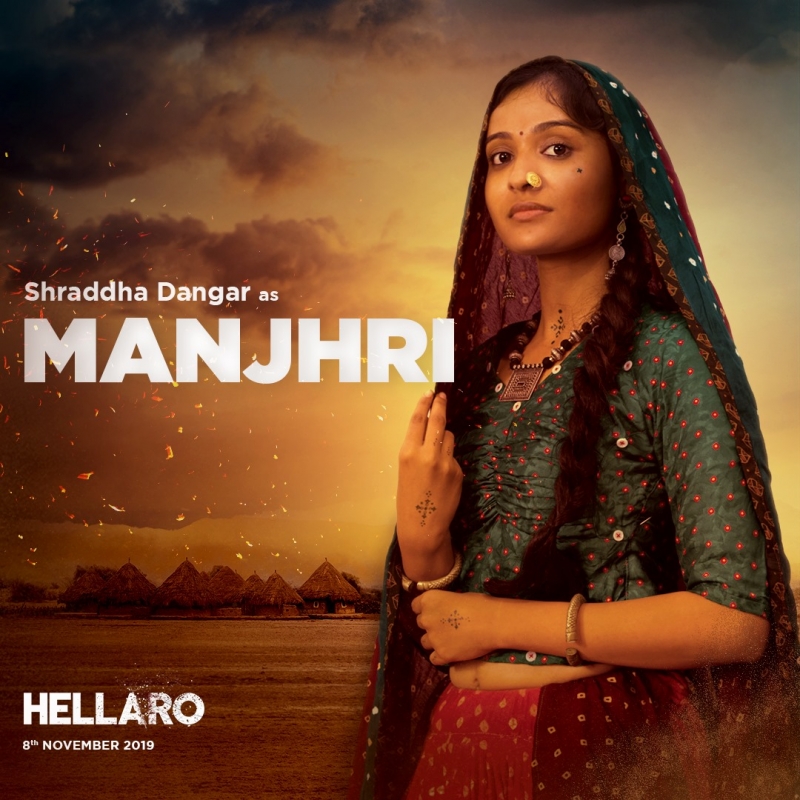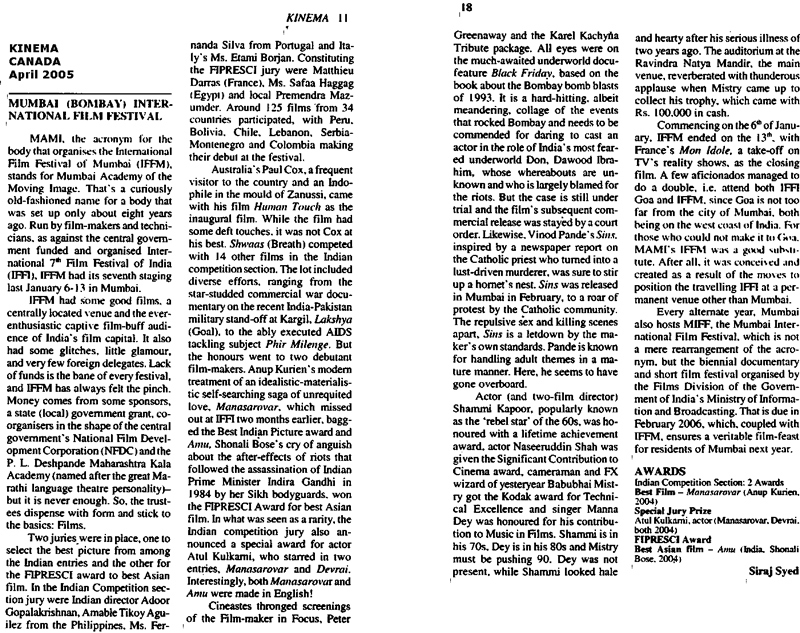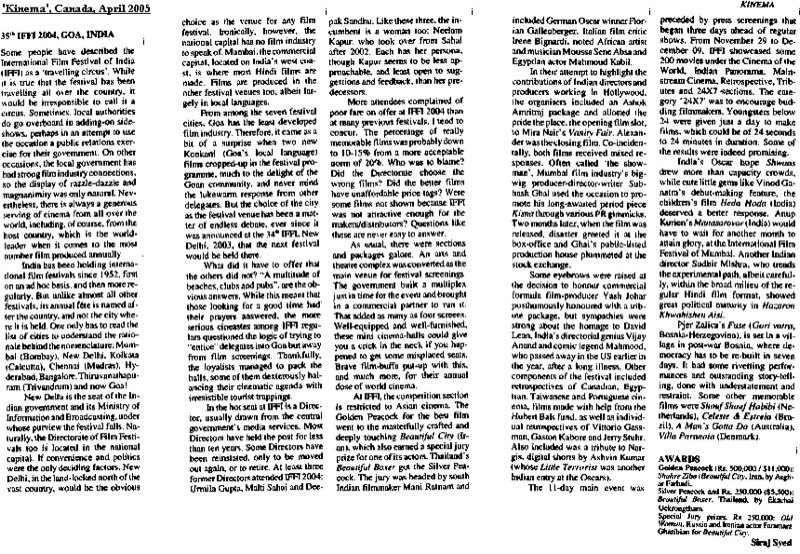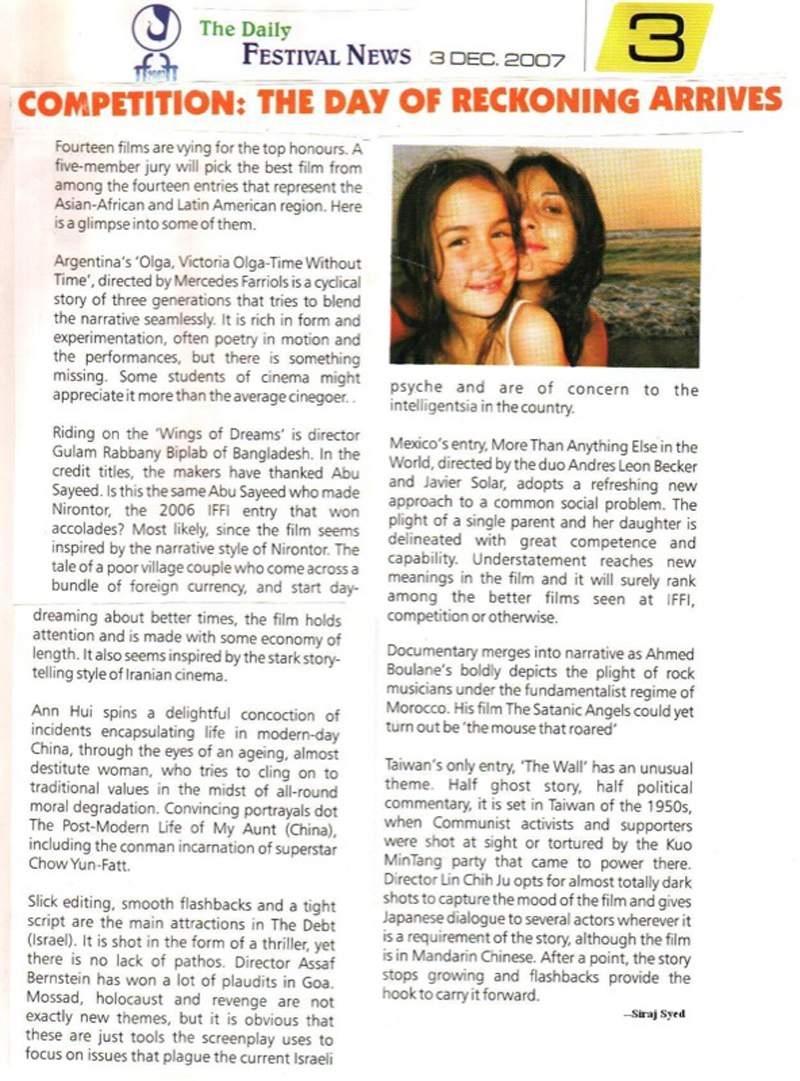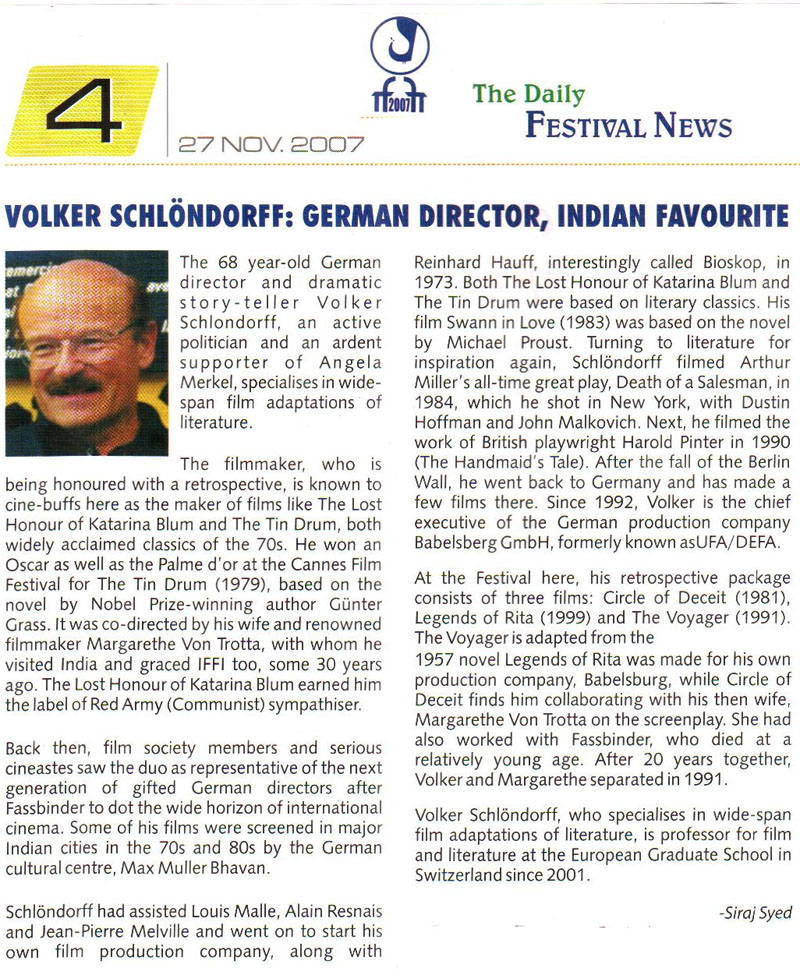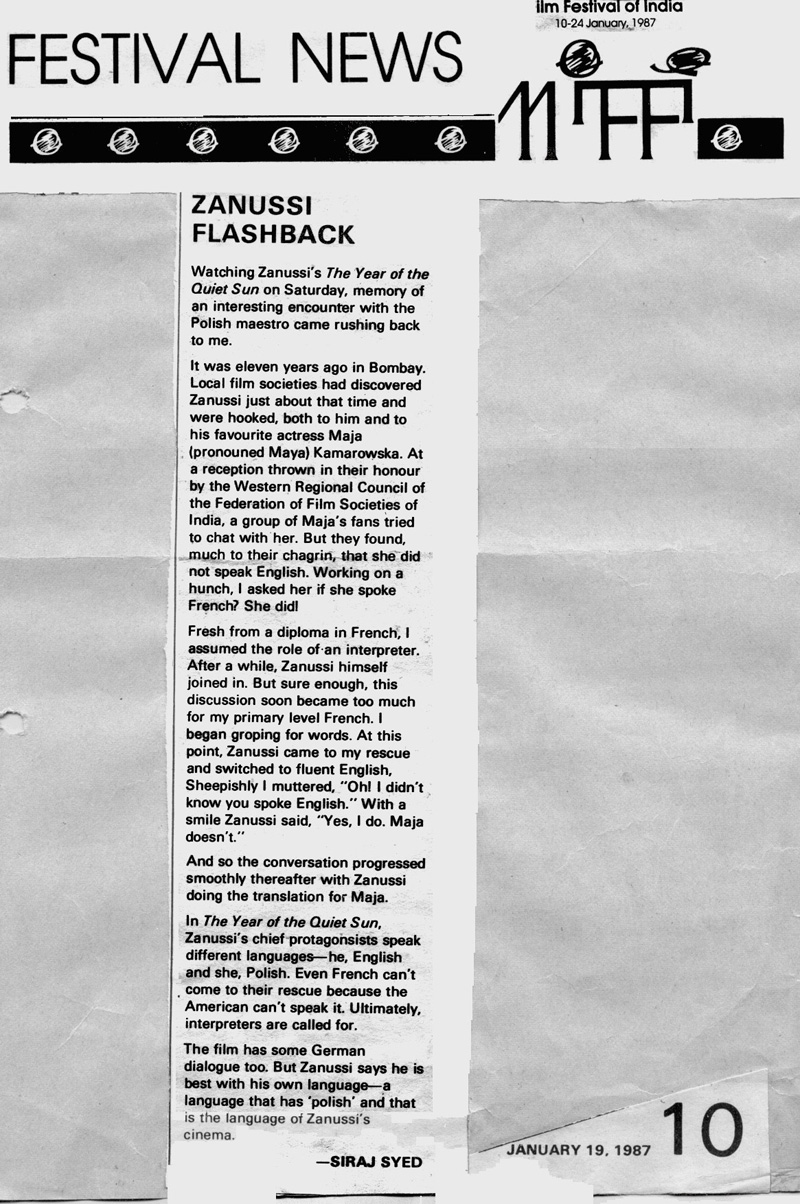|
|
||
|
Pro Tools
FILMFESTIVALS | 24/7 world wide coverageWelcome ! Enjoy the best of both worlds: Film & Festival News, exploring the best of the film festivals community. Launched in 1995, relentlessly connecting films to festivals, documenting and promoting festivals worldwide. Working on an upgrade soon. For collaboration, editorial contributions, or publicity, please send us an email here. User login |
Hellaro, Review: Say Hello to Hellaro
by Siraj Syed Curiosity about the film has been rather high, considering it won the Best Feature Film at the National Film Awards, being the first Gujarati language film ever to bag the honour, with a Special Jury prize for its 13 female actors to boot. Hellaro (The Outburst) is to be the opening film of the Indian Panorama Section at the 50th International Film Festival of India, Goa, and an official entry in the Best Debut director category. There is little doubt that it is one of the best films seen this year, but whether it is the best is open to debate. It is 1975, and the Prime Minister of the country, Indira Gandhi, has imposed an internal emergency. Anybody found criticising the government can be arrested. Manjhri, a young, city-bred girl, who has studied up to the 7th class, is married off to a small village in the middle of nowhere, in the Rann (barren desert-lands) of Kutchh, Gujarat. Her husband is in the army and takes leave to come for the wedding, leaving a week afterwards, for duty on the Himalayan borders. She joins a group of women, shackled by patriarchal mandates, not allowing them to indulge in most activities, including the traditional garba dance, which all of them yearn to perform, but it is the men who do the dancing, alone. Their only escape from the suppression is when they go out to fetch water every morning to a distant lake, in metal pots. Other than those few hours every day, their lives are bound by the rules made by men, which they have to abide by. One day, while on their way to fetch water, they find someone in the middle of the desert. He appears to be dead, but on closer look they find him alive and begging for water. Some of the women want to avoid any contact with the stranger, as it is against their mandate, but when a widow, Kesar, takes the initiative, they relent. He carries severe wounds on one hand and seems to be terribly hungry and thirsty. For some reason, he makes a temporary camp there, and the women bring him food the next day. It turns out that he is a dholee (drummer) from another village and keeps muttering that his wife and daughter are right there, somewhere nearby. Manjhri and a few of the women see his arrival as a boon, and request him to play the dhol, while they dance the garba to its beat, an act that they could only have indulged in while dreaming. A largely collaborative effort, the writing talent on Hellaro comprises screenplay by Abhishek Shah and Prateek Gupta, with Saumya Joshi contributing dialogues and lyrics. Based on folkore, the story has been penned by co-producer, casting director and director, Abhishek Shah, his debut film. Prateek Gupta co-produced and edited the film. A word about Abhishek. Born and raised in Ahmedabad, Shah is a B.Sc., with a specialisation in mathematics, and a post-graduate Diploma in journalism. His association with drama began at age seven, though he has never done commercial theatre, considering drama a spiritual pursuit. Shah’s Casting Skills were used in Gujarati films like Bey Yaar (Two Friends), Chhello Divas (The Last day) and Wrong Side Raju. He had no plans to direct, until the story of Hellaro came to him. It wasn't an easy first film. The story required an entire village to be built on a barren landscape. Fifteen bhungas (circular houses with thatched roofs, peculiar to the Kutch region), a chowk (village square) and a temple were made. The National Competition Jury praised the film’s production design, costumes and cinematography, in particular. And when there are knowledgeable souls like Rahul Rawail and Gyan Sahay on the Jury, they mean business. Shah agrees whole-heartedly that his film is a complete tribute to Ketan Mehta’s iconic Mirch Masala (1987), but we find shades of Guide (1965) and Jal (2014) too. A few things did jar, though. There was no evidence of any great effect the failure of three consecutive monsoons have had on the population, which goes to great length to appease the goddess and get rain. Only one of them, Bhaglo, is allowed to go to the city (Bhuj), on horseback, and bring essential supplies, but he brings just a trickle, and that does not matter to anybody. Besides him, the only other man to leave the village is the army-man. What do the others do the year round, since there is no agriculture, is not shown. How much and for how long can they do the garba, conduct prayers and fire rituals (havans) and gurgle on the huqqa? They are steeped in antiquity, and superstition, that is for sure. A prized possession, a cannon that is a relic from an older war, is a much sought-after antique but the village-head will not part with it at any cost. When a village woman dared to do some embroidery work and Bhaglo’s predecessor started selling the cloth in the city, she and the man had to leave the village pronto, because the villagers consider such trade as akin to prostitution, and would not dream of living off the earnings of a woman. They were caught, eventually, and butchered. So, her mother-in-law advises her son’s newly married bride Manjhri to play safe, and not to do any embroidery at all. Being the most literate in the village, and city-bred, Majhri has a tough time fitting into the village’s patriarchal milieu. Yet, the men to enjoy peeks into the world of cinema, provided by Bhaglo, who narrates to them the stories of films like Bobby (1973) and Sholay (1975). They also listen to radio on a rickety old set, which sometimes tunes into Radio Pakistan. Avery interesting aside is when they are listening to Radio Pakistan’s chaste Urdu, one of them warns them that this is the enemy’s radio. Another comments, “I did not understand a word. But the language was so sweet and music to the ears.” Indeed, hijrat, a word that comes up often in the film, is from Urdu, with Arabic roots, meaning going away or migrating. The second half is not as compelling as the first half, but for the fact it is obviously laying the ground for the climax. One of the garbas is shot almost as an item song. Also, there is only one child shown in the entire village, which is rather odd. Language used in the film varies from simple Gujarati to local dialect to pure Kutchhee, but the sub-titles make things a lot easier. Keeping the presence of the dholee a myth was a good idea. However, when the writers and director get into flashback mode, the myth becomes harsh reality and some of the charm is lost. Questions arise…how did he survive till the time he did? Why did nobody come looking for him? How did he live in the open till arrangements were made for his food and shelter? Sweeping panoramic shots, top angles using drones or helicopters, the frenetic, trance-like movements of the dancers, while the dholee just keeps beating a rhythm, the formations, with elements like the pots, the women and the dholee, against the barren, drought-stricken terrain, are some of the highlights of the costume design, music, cinematography and editing. Music is by Mehul Surti and cinematography by Tribhuvan Babu Sadineni. Prateek Gupta needed to keep a tighter hold on the second half, and the 121-minute film can do with some 15 minutes of pruning.
A long list awaits us as we get to the cast: Shraddha Dangar (Manjhri), Shachi Joshi (Ganga), Denisha Ghumra (Radha), Niilam Paanchal (Leela), Tarjani Bhadla (Gauri), Brinda Nayak/Trivedi (Kesar), Tejal Panchasara (Gomti), Kaushambi Bhatt (Champa), Ekta Bachwani (Hansa), Kamini Panchal (the older, more sceptical Mena), Jagruti Thakore as Rudi, the mother-in-law, Riddhi Yadav (Kanchan) and Prapti Mehta (Seeta, the only child actor in the film). An excellent example of underplaying and almost non-acting comes from Jayesh More as Mulji, the low-caste dholee. Other male actors are Shailesh Prajapati as Mukhi (the village headman), Kamlesh Parmar as Saavji, Aakash Zala as the ruthless and presumptuous Joraavar, Arjaav Trivedi as Arjan (the steely army-man), Kishan Gadhvi as Raavji, Maulik Nayak as an intriguing Bhaglo, Nilesh Parmar as Kaanji and Rajan Thakar as the radio-fixated Ranmal. What better way to condemn superstition, patriarchy and racial supremacy than using folklore and the national emergency of 1975 as allegories and metaphors? Go to the nearest cinema screening it, and say Hello to Hellaro, one hell of a movie! Rating: *** ½ Trailer: https://www.youtube.com/watch?v=qb8uOylK3R4 07.11.2019 | Siraj Syed's blog Cat. : Aakash Zala Abhishek Shah Arjaav Trived Denisha Gumra Ekta Bachwani i Brinda Nayak/Trivedi i Shradhdha Dangar Jagruti Thakor Jayesh More Kamini Panchal Kamlesh Parmar Kaushumbhi Bhatt Kishan Gadhvi Maulik Nayak Mehul Surti Niilam Panchal Nilesh Parmar Prapti Mehta Prateek Gupta Rajan Thakar Riddhi Yadav Sachi Joshi Saumya Joshi Shailesh Prajapat Swati Dave Tarjanee Bhadla Tejal Panchasara Tribhuvan Babu Sadineni Independent FILM
|
LinksThe Bulletin Board > The Bulletin Board Blog Following News Interview with EFM (Berlin) Director
Interview with IFTA Chairman (AFM)
Interview with Cannes Marche du Film Director
Filmfestivals.com dailies live coverage from > Live from India
Useful links for the indies: > Big files transfer
+ SUBSCRIBE to the weekly Newsletter Deals+ Special offers and discounts from filmfestivals.com Selected fun offers
> Bonus Casino
User imagesAbout Siraj Syed Syed Siraj Syed Siraj (Siraj Associates) Siraj Syed is a film-critic since 1970 and a Former President of the Freelance Film Journalists' Combine of India.He is the India Correspondent of FilmFestivals.com and a member of FIPRESCI, the international Federation of Film Critics, Munich, GermanySiraj Syed has contributed over 1,015 articles on cinema, international film festivals, conventions, exhibitions, etc., most recently, at IFFI (Goa), MIFF (Mumbai), MFF/MAMI (Mumbai) and CommunicAsia (Singapore). He often edits film festival daily bulletins.He is also an actor and a dubbing artiste. Further, he has been teaching media, acting and dubbing at over 30 institutes in India and Singapore, since 1984.View my profile Send me a message The EditorUser contributions |

















